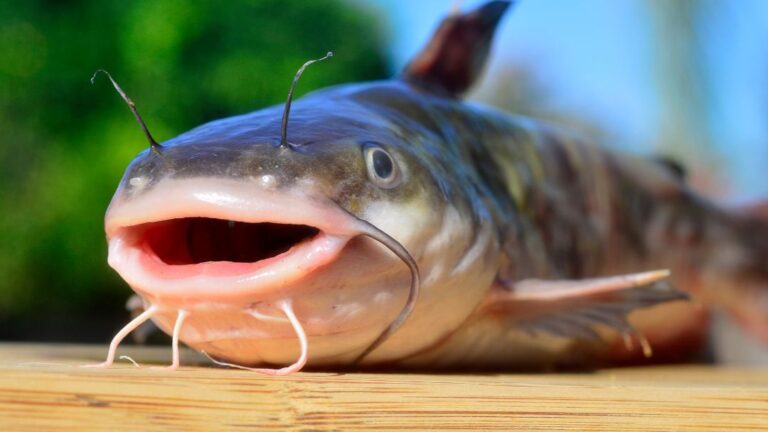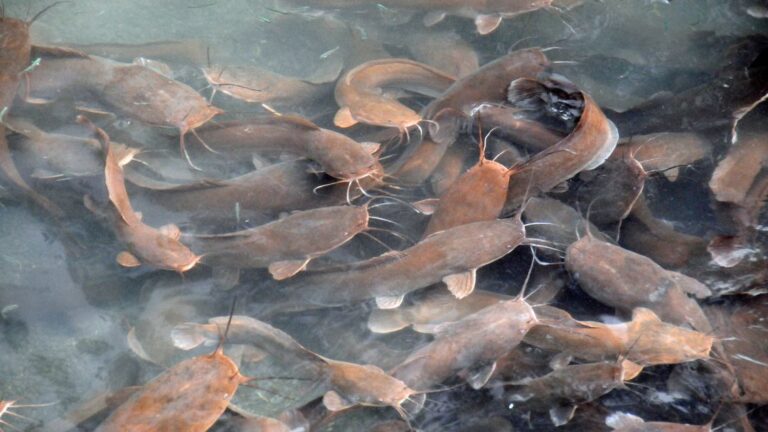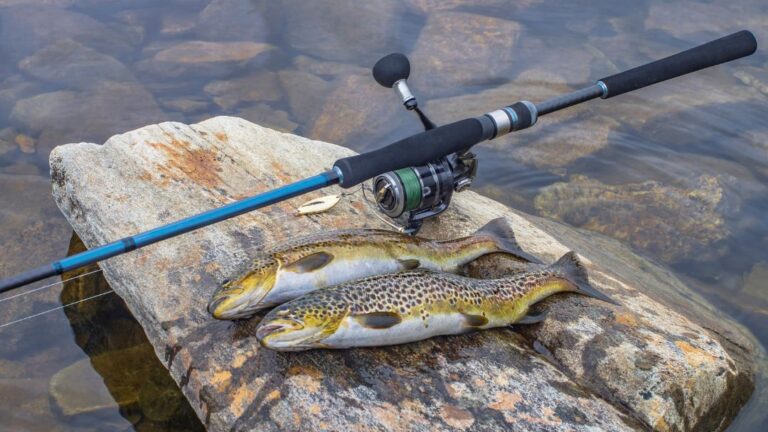How Many Catfish Seasons Are There
Like many other fish, catfish follow a diversified pattern in various seasons. These ray-finned fish changes their behavior when the season changes. Water currents, water temperature, and food availability in different parts of the year affect catfish.
How many catfish seasons are there? Various types of catfish species are available over the years. Catfish have four seasons: summer, fall, spring, and winter. Water temperature, weather, water flow, habitat, etc., affect the seasonal changes in catfishing.
How Many Catfish Seasons Are There?
Seasonal variety affects your fishing experience. The same rules apply to catfishing.
There are mainly five seasons available for catfishing. But the availability of catfish is not the same for all these five seasons.
Here, I will give you a detailed idea about all these seasons.

Summer
Not all catfish will act the same way in summer. Some species are highly active during this season, while others restrict their movements.
For example, channel catfish is one of the best catfish for catching during the summer months.
They can digest food rapidly, get increased energy, and eat more frequently. This ray-finned fish can swim around faster.
Catfish are not particularly sensitive to light. But their body is just getting used to the dark.
However, they will minimize their movements during the middle of the day due to the intensity of the sunlight.
Catfish are more likely to stay in deeper and cooler waters. You can find them in cooler locations of lakes or creeks if they have deeper water in the early transition from spawning areas.
Early Fall
Temperatures start dropping during the early fall. It generally ranges from 13°C to 25 °C.
When the water temperature is at 70°F to 75°F, many species of catfish usually prefer spawning. Many catfish prepare themselves for breeding during this period.
They consume a lot of feed during the spawning period while guarding their nests and eggs. It can be a great chance to target various types of catfish.
One of the most common catfish to catch is Flathead catfish during early fall. The movement of ray-finned fish will slightly change due to the fall turnover.
Fall
Fall is one of the best seasons for catching a wide variety of catfish. They are available throughout the day all along the water column.
Natural lakes, rivers, and low waters are the top locations for catching ray-finned fish during the fall season.
You can find catfish underwater points, sunken islands, creek arms, bluff walls, weed edges, and various other potential spots.
Are you a fan of blue catfish? Catching a good number of smaller blue catfish during the fall is easygoing.
Deepwater, strong currents, and close-by structures are the key areas to get repeated bites on your fishing gear.
Most ray-finned fish will prepare themselves for the upcoming colder months. They will be more aggressive and less choosy to collect food. This will help you catch a greater number of catfish.
Winter
When the water temperature drops from 40% to 50%, catfish will slow down their activities.
Catching crayfish requires more technical strategies as they are less aggressive in hunting food.
Don’t think ray-finned fish will spend ample energy to chase down a tiny snack.
Unless you offer a large amount of meals in a warm spot, fish is less likely to bite. You will still need an additional elbow grease for the bite.
Rocky bottoms and shallow flats are the common areas catfish are likely to hide. You have to target the warmest spot of the lakes, ponds, or river branches
If you are targeting catfish in a shallow water zone, make sure it is at least 20+ feet deep.
The mouths of the streams and rivers have several deep wintering holes. Catfish are more likely to stay here as the water is warmer than the shallower water.
Spring
As the winter season starts disappearing, the water temperature starts rising. You can find catfish in murky waters and shallower mud flats above and bottom of the hole during spring.
Giant blue catfish are available during spring. However, using the proper catfish bait and tackle is the key to being successful in the water.
Prepaid baits (dough balls), liver, chicken parts, dead/live fish, etc., are the top choice to attract catfish during the spring.
You can target ponds, lakes, reservoirs, and rivers, especially the rocks and gravel bottoms of these waters.
What Factors Affect Catfishing Seasons?
Catfishing is possible all year round. But their seasons vary throughout the years.
The followings are the crucial factors that will affect catfishing seasons.
01. Water Temperature
When it comes to consistent catfishing, the temperature range should be between 65-76°F.
If the water temperature and air temperature fluctuate more often, it can significantly affect your catfishing.
Generally, stable water temperature is preferred to catch higher numbers of catfish.
Water temperature plays a vital role in the catfish’s growth, feeding pattern, and reproduction.
For example, when the water becomes too warm, its oxygen level will drop. Fish will slow down their movements and stay inactive.
It will affect their energy balance and feeding behavior as well as metabolic rate. You want to alter your catfishing technique if the water temperature changes suddenly.
02. Weather
Catfish don’t prefer unstable weather conditions. If the weather fluctuates rapidly, they may stay at the bottom of the water, where the water is less affected by temperature changes.
For example, when the barometric or air pressure increases, catfish are more likely to be found near cover and in lower depths of the water.
But ray-finned fish may stay in shallower water if the air pressure is lower. They can hunt more food at lower air pressure.
Rains can also affect the water by aerating the top water. Catfish will be more active after the rain due to the cooling effect.
Stronger wind blows will create greater friction and waves, raising the water’s turbidity and pulling currents.
Windy weather can be a great choice to improve fishing conditions by creating additional currents.
03. Water Flow
The stream flow of water can directly or indirectly affect your catfishing.
For example, when the water movements increase than common conditions, catfish will be more active.
This helps them to grow better and develop muscles from increased physical activities.
However, too fast water flow may increase their stress levels and affect their overall health. This is especially a concerning point when they can’t migrate from one area to another.
But large-sized catfish can easily cope with higher water flow than smaller ones due to their larger physical structure.
Waters with low-level flows are not good either. Catfish will have to work harder to swim around the water. This causes faster energy loss, and they have to eat more.
Anglers often use this opportunity to catch fish as ray-finned fish will be less picky in choosing feed.
04. Habitat
Catfish are highly sensitive to water level changes. Choosing the right location to target ray-finned fish is the key to being successful in fishing.
If you are catching fish in lakes, the ideal water depth is between 15 and 20 feet.
But when you are fishing in a river, especially during the summer season, focus on deeper water.
For example, if the river has an average of 10 feet of water depth, you can start aiming catfish at 30 feet to target a good number of catfish.
I won’t also overlook the water structure. Most rivers contain rock, gravel, and sand bars. But lakes, ponds, and streams may have different water structures.
Anglers need to adjust their fishing techniques and use special fishing gear to target a higher number of catfish.
Tips For Catching Catfish In Various Seasons
Many new anglers often ask me what the hidden secret of being a successful angler.
My simple answer is fishing experience and knowledge that I have acquired over the years.
It didn’t happen in the blink of an eye that God directly sent it to you personally, right?
Here are some top tips for catching catfish in various seasons.
Summer
- Use a fish finder or sounder device to locate fish underwater by getting different underwater information such as water depth, water currents, etc.
- Target well-aerated locations on the river, pond, lake, or reservoir, as these locations have good oxygen levels.
- Catch catfish at night, especially flathead, as they increase their activity during summer. They can’t withstand intense sunlight.
- Target shady areas in the water. Catfish might be hiding and resting in those spots. You can use buzz bats or spinnerbaits for effective fishing.
Fall
- Fish usually stay in areas where they find comfort and a lot of feed. Hotspots like channel edges, structures, shallow water areas, etc., can be perfect for catfishing.
- Don’t stay in a single fishing location. Change your fishing spots as catfish moves. This will help ultimately find the catfish.
- Catfish baits are available in various colors, sizes, and shapes. Try various lures, such as Crankbaits, swimbaits, etc., to attract them into striking.
- Ray-finned fish won’t waste their energy to get a little feed. Offer larger sizes of meals at a time to attract them.
- Catfish often use weed beds for relaxing and hanging out at different times. Give special attention to these overhanging vegetation to catch them.
Winter
01. If you are fishing during icy conditions, keep a functional and powerful ice auger to find the best fishing spot quickly.
02. Catfish rest in the deepest pools in the water during the winter to find warmer spots. Your fishing gear must reach the bottom area.
03. You have to be patient as their food and oxygen requirement decrease during the winter. Also, their live food sources move slowly.
04. Make sure to use heavier-weight lines and sinkers during the winter as water becomes heavy. It helps stabilize the nymph rig.
Spring
- Focus on areas that provide Structures and cover, such as rocks, ledges, drowned trees, humps, etc. Catfish are likely to spawn on weeds, twigs, and sunken trees.
- The water is still in enough color during spring. Catfish will prefer to stay in warmer spots. Look for areas where the water is hotter than other locations.
- Early morning is the best time for catching catfish during the spring. Instead, you can choose late morning or afternoon, as the sun is hot enough to create some hotspots.
- One of the practical approaches to attracting catfish is placing a bait cloud in the water. It creates a scent and a visual cloud to trick catfish.
- Don’t immediately set the hook once the catfish bite the lure. You want to wait two or three seconds to let the fish properly bite it.
Wrapping UP
Are you still wondering how many catfish seasons there are? The self-fulfillment pleasure of catfishing can be more enjoyable if you can catch more fish.
Seasons may affect your fishing experiences. But your chances in the water heavily rely on your fishing techniques.
I have already mentioned dozens of fishing tips to use in various seasons. Make sure to use the right catfishing gear to become more successful in catfishing. Happy fishing!







